BY LINCOLN ANDERSON | Updated July 4, 1:30 p.m.: Chris Marte and his supporters are not waiting for the Board of Elections to tell them what they already know: Marte has won the Democratic primary election for Lower Manhattan’s District 1.
Friday afternoon, they held a jubilant victory rally in Chinatown on the sidewalk outside the Eastbank building, at the corner of Canal and Centre Sts. People festively held red and yellow balloons. Marte led a cheer of “We have won!” The crowd chanted, “Mar-taay! Mar-taay!” Passing cars and trucks honked their horns in support.
Though the results for the June 22 primary probably will not be official until this coming Tuesday, Marte won about 40 percent of the first-place votes, giving him an insurmountable lead over his opponents. He said they have already counted the absentee ballots and that it’s clear — he won.
Admittedly, there is still the general election in the fall where Marte will face two opponents, Jacqueline Toboroff, a Republican, and Maud Maron, running as an independent. Maron came in fourth in the primary with 9 percent of the vote. But in heavily blue Lower Manhattan, Marte is the prohibitive favorite to win in November.
Marte’s likely stunning victory in the primary is being hailed across the district as not just a mandate but an emphatic repudiation of the 12-year reign of Councilmember Margaret Chin, who is being forced from office due to term limits.
The key to Marte’s win was no secret: On every single issue where Chin took a position against the community, Marte has instead stood with them — from saving the Elizabeth Street Garden and backing the Chinatown Working Group rezoning plan to opposing the mayor’s contentious, 11th-hour Soho/Noho upzoning. The strategy nearly worked four years ago, when Marte lost to Chin by only about 200 votes.
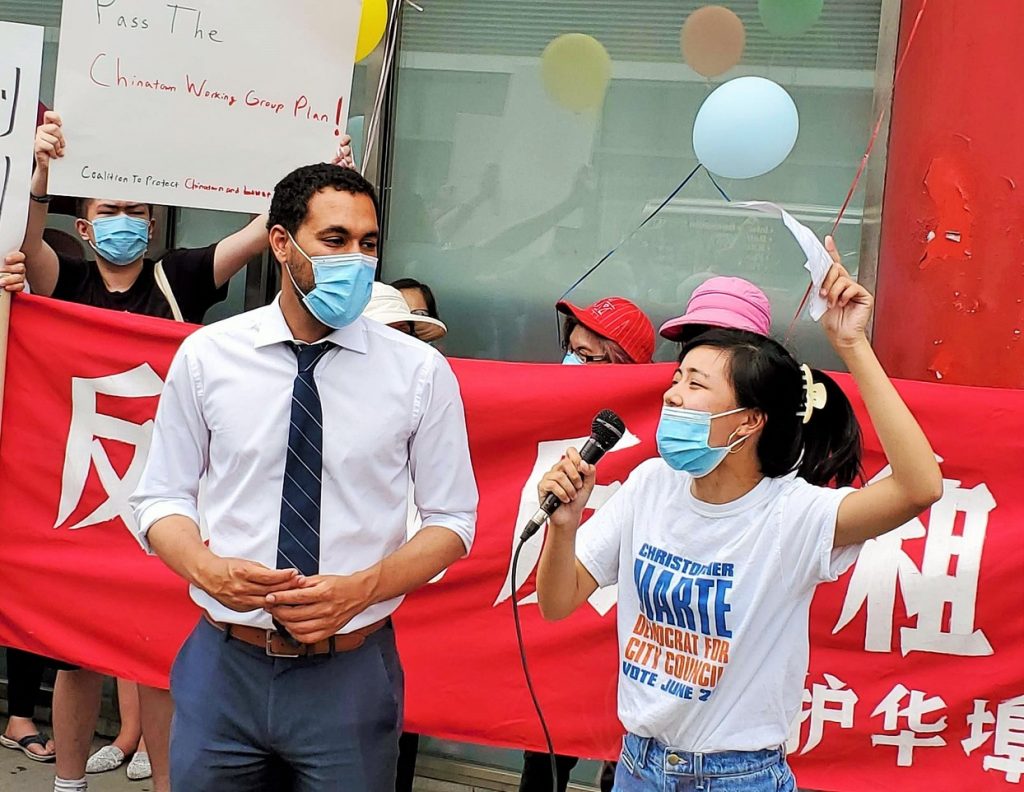
This time around, Marte won every single election district in District 1 — including Battery Park City and the Financial District — except for the two E.D.’s that cover Confucius Plaza, which Jenny Low took. In addition to Chinatown, FiDi and B.P.C., the diverse district also includes South Street Seaport, Tribeca, Lower East Side, Soho and Washington Square Park and the blocks around it.
Friday’s celebration was organized by the Coalition to Protect Chinatown and the Lower East Side. The group backed Marte as the only candidate to run on an anti-displacement platform, who also had the wide support of tenants, workers and small businesses across the district.
Critically, for his base in Chinatown, Marte was the only candidate to support the passage of the Chinatown Working Group plan. Advocates say the community-based rezoning scheme, drafted more than 10 years ago, would protect Chinatown and the Lower East Side from overdevelopment.
Jennifer Chiao, a member of Youth Against Displacement, the rally’s emcee, ticked off all the causes where Marte has stood with the community, such as, for example, fighting to get hunger-striking tenants who were displaced from 85 Bowery back into their homes.
“This list goes on and on as Mr. Marte continues to put the community first,” Chiao said. “We look forward to the passage of the Chinatown Working Group plan to send a clear message to developers and slumlords that the Lower East Side is not for sale.”
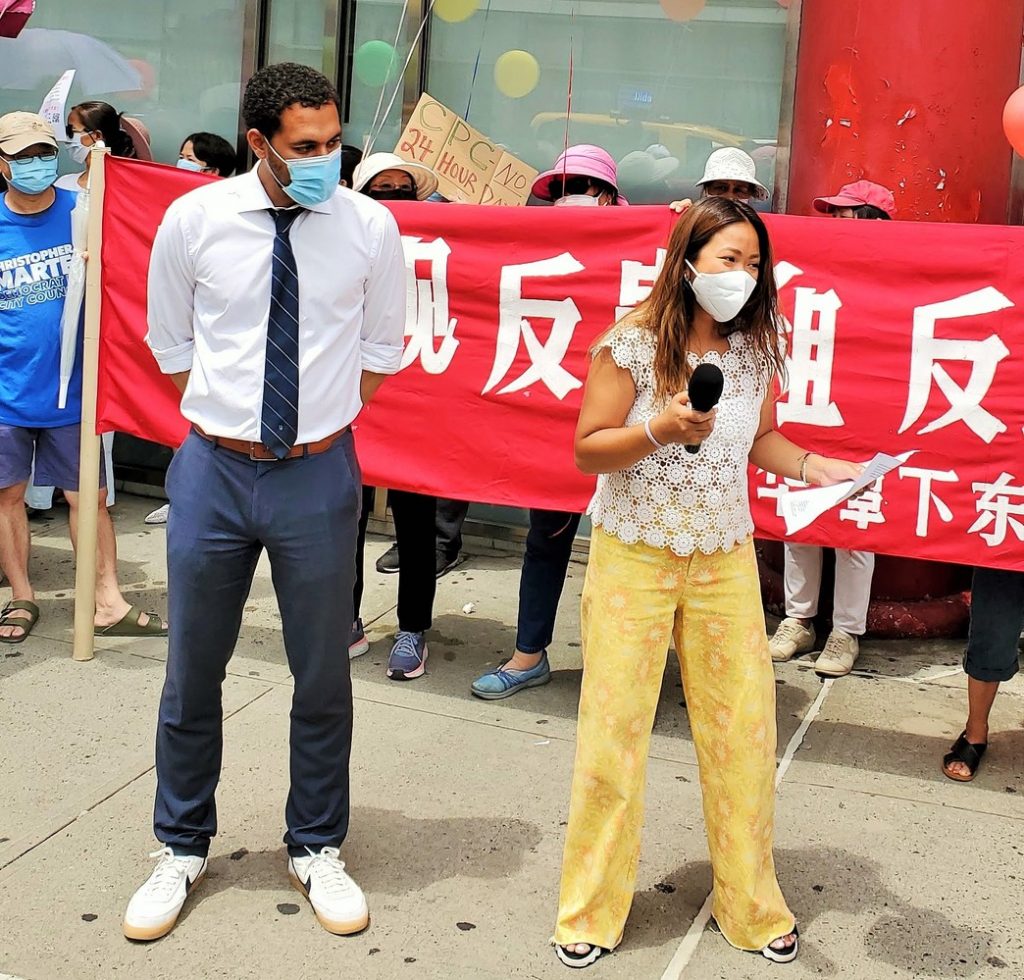
“For a long time this community has been waiting for a candidate to represent them,” said Jen Chantrtanapichate, the program director at the Sixth Street Community Center. “We are optimistic with this election because Chris Marte understands…that the so-called affordable housing that we are given…is not affordable to most low-income people.”
Chantrtanapichate also called the resiliency project for East River Park and the mayor’s scheme to build a climate-change center on Governors Island both “just contradictory and so transparently ill-intentioned.” Marte opposes both plans.
Holding a cowbell he had been happily clanging, Sean Sweeney, the director of the Soho Alliance and a leader of Downtown Independent Democrats, likened Marte’s election to emerging from a long drought.
“All of a sudden, the sun has come…and the rain,” he said. “Now I see a green field for the next eight years ahead.”

A group of healthcare workers from Chinese-American Planning Council next stepped forward to cheer Marte’s win. One said she had worked for the nonprofit for 21 years, the last eight doing brutal 24-hour home healthcare shifts.
“We demand that Jenny Low concede immediately!” she said, as the crowd chanted, “No more 24!”
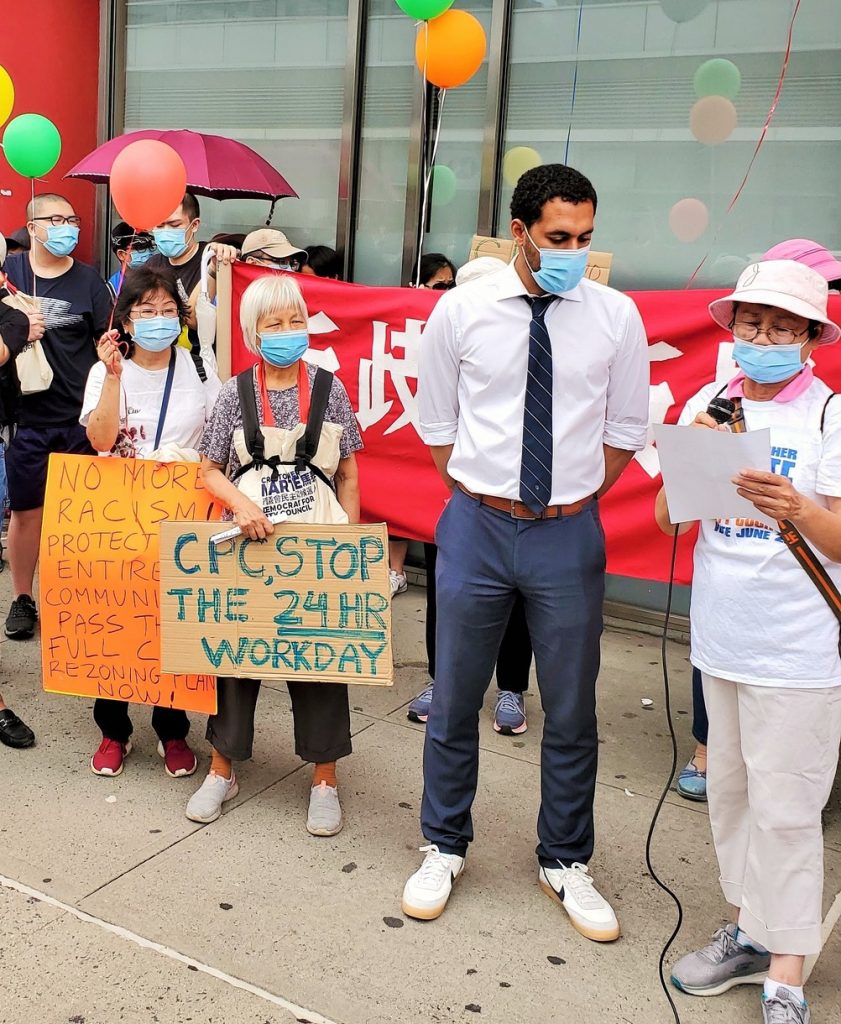
Another expected front-runner in the race, Low, a longtime Chinatown Democratic district leader, got 17 percent of the first-place votes. For the past few years, Low has worked in the City Council. But her previous stint as the board chairperson at the Chinese-American Planning Council dogged her in the election as she was accused of having maintained the grueling 24-hour workday for the organization’s home healthcare workers. Marte, on other hand, supported the workers’ calls for better treatment.
Also speaking at the rally was Francisca Benitez from Art Against Displacement. A Chinatown-based artist, she said the group strongly backs the community-based Chinatown rezoning plan.
After his supporters spoke, Marte, 32, described his journey into politics. He noted that seven-and-a-half years ago, he was planning to go to law school. But one day as Marte was heading to the subway, someone handed him a flier for NMASS (National Mobilization Against Sweatshops). It sparked his interest in activism. Then, a few months later, he went to a town hall meeting on the city’s plan to build affordable senior housing on the Elizabeth Street Garden.
“There were hundreds of people there who wanted to save the garden. I saw our councilmember sitting in the front row ignore them,” he said, referring to Chin.
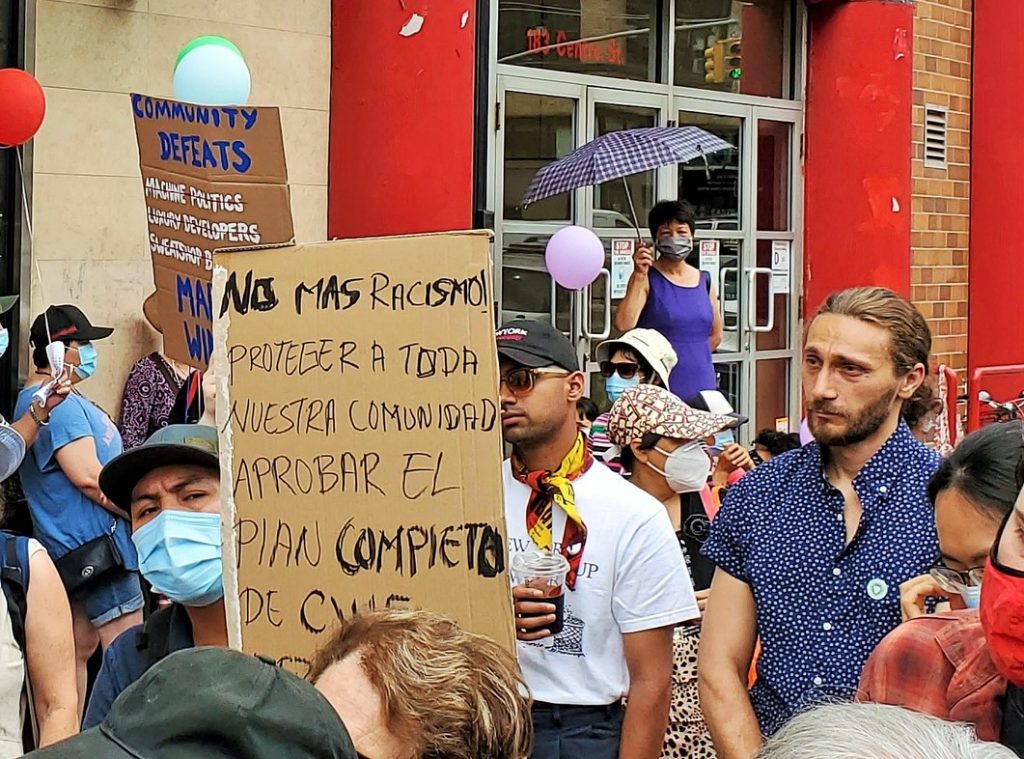
Speaking after the rally, Joseph Reiver, the Elizabeth Street Garden’s executive director, said of Marte, “We’re really looking forward to working with him to save the garden. It’s the first time that we’ll have the support of our councilmember. It’s the first time we’ve had a councilmember who’s even visited the garden.”
Continuing his remarks to his supporters, Marte said that, as for the negative campaign waged against him by both Low and developers, it came from desperation.
“If you look at the map of where we won,” he said, “it was all through the district. They knew the power of a unified Lower Manhattan. The people that are against us, they knew they lost. But this is not the end of years of struggle. We use this energy to continue the fight.”
Speaking to that idea of a unified district, Marte rattled off a laundry list of groups that were behind his candidacy, including East River Park ACTION, Bowery Alliance of Neighbors, Broadway Residents Coalition, Human-Scale NYC, Downtown Independent Democrats and more.
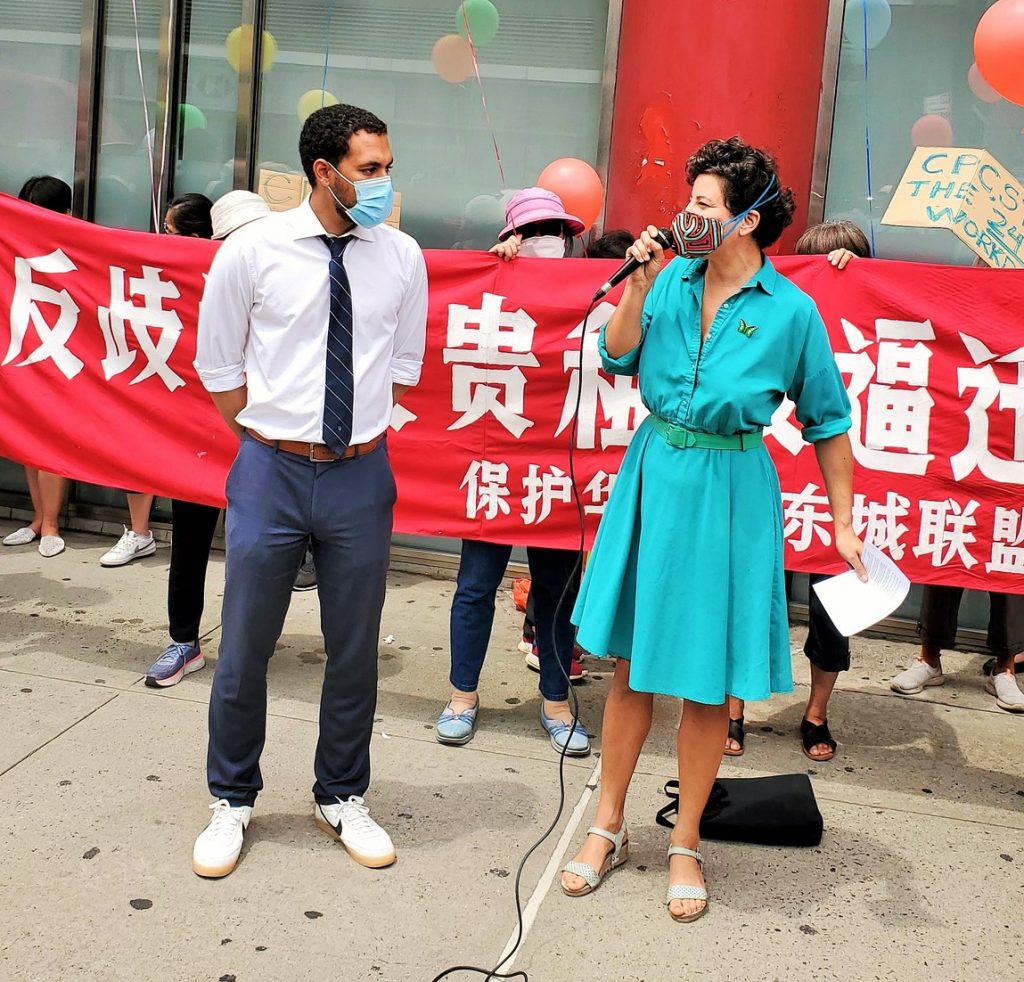
The rally’s location, the Eastbank building, is currently ground zero for Chinatown anti-displacement protests. For more than three months, former workers from the now-closed Jing Fong restaurant and their supporters have picketed twice weekly outside the pagoda-style structure, which is owned by the Chu family.
One of Chinatown’s biggest landlords, the Chus evicted Jing Fong in March. In addition to Eastbank, they own Hotel 50 Bowery. Marte has supported the Jing Fong workers. The Chinatown Working Group plan’s passage would likely put a damper on the Chus’ local development ambitions.
In addition, this particular corner of Chinatown is also within the proposed Soho/Noho rezoning area and, if the plan is approved, would see some of the largest development — and potentially most displacement of existing rent-regulated tenants.
Marte also has been a strong supporter of the fight to save East River Park from being destroyed for the East Side Coastal Resiliency project, and has fought against the four proposed luxury towers on the Two Bridges waterfront.
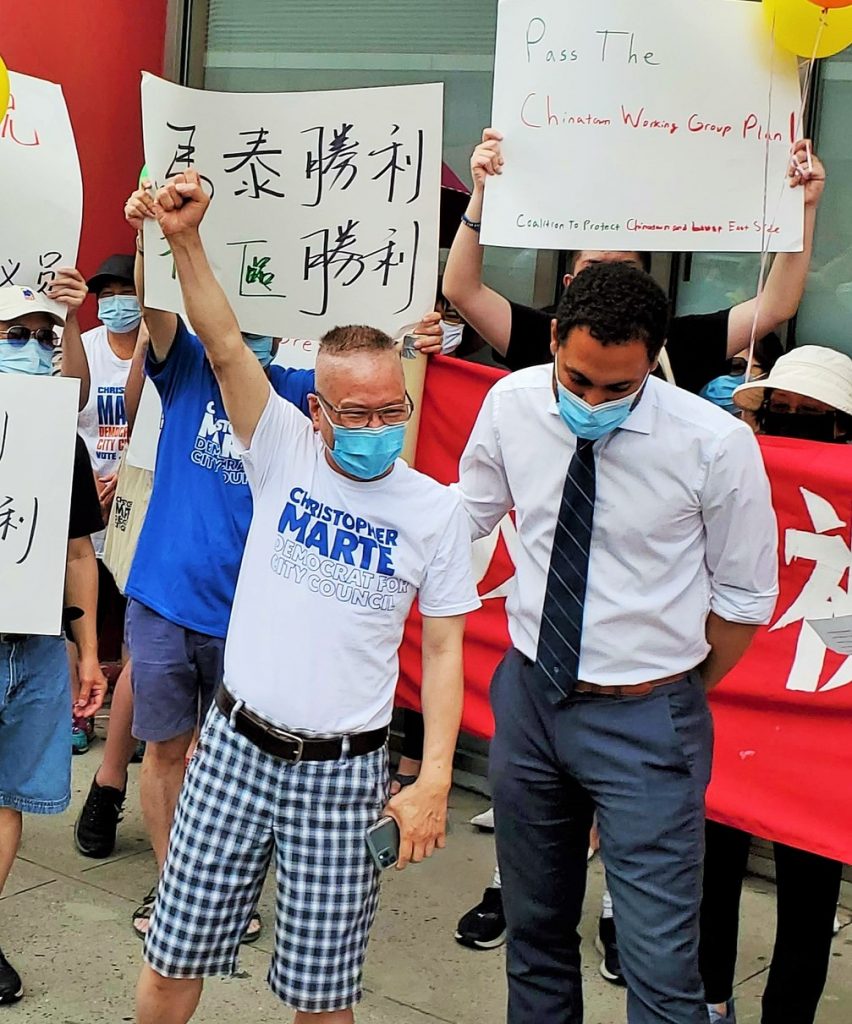
In fact, his anti-development stance earned the ire of billionaire real estate developer Stephen Ross, whose super-PAC spent more than $25,000 on mailers attacking Marte, fearing his election would upend the status quo.
Indeed, during Councilmember Chin’s tenure, the district has seen an explosion of luxury development, including One Manhattan Square, Extell Development’s 72-story tower next to the Manhattan Bridge. Though slowed down by community lawsuits, developers are pushing to build four more similarly gargantuan towers next to the Extell site in Two Bridges.
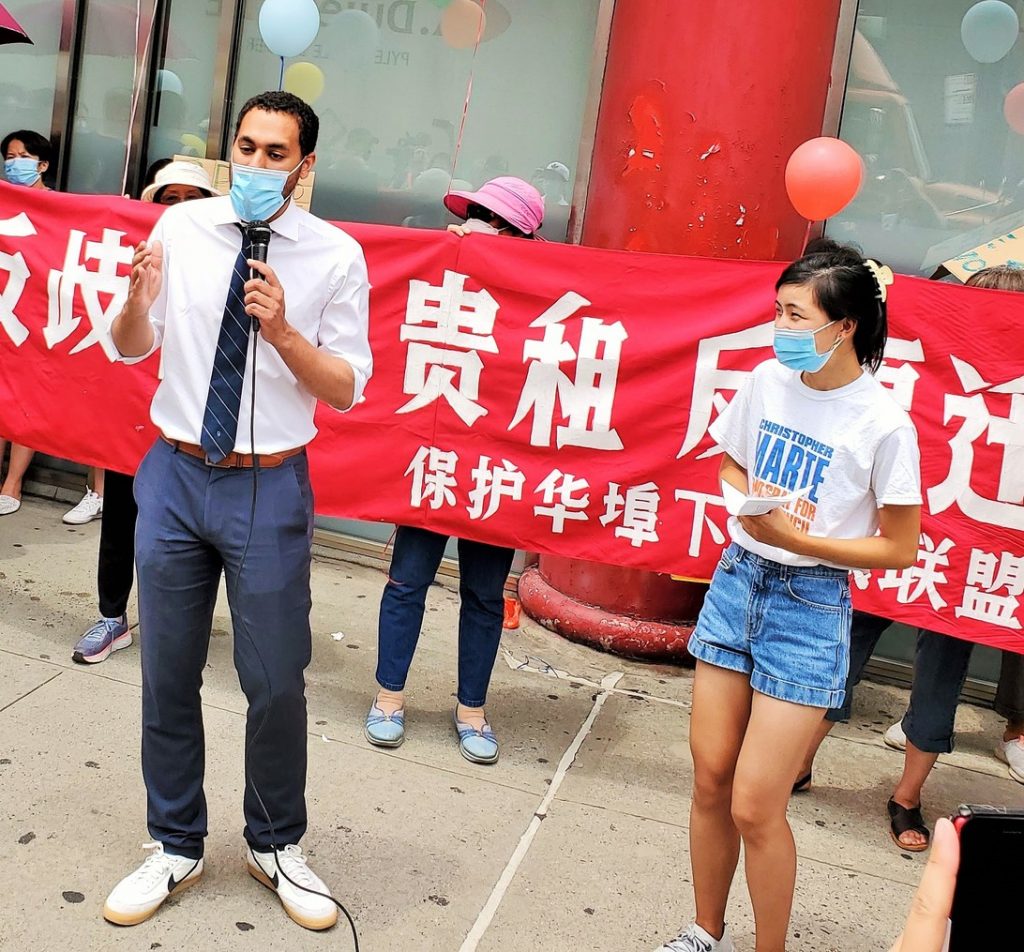
As District 1’s councilmember, Margaret Chin was also instrumental in approving the construction of a new megajail in Chinatown, as part of the city’s plan to close Rikers Island. Marte strongly opposes the jail project.
Although District 1 was originally redistricted to be an Asian City Council seat, the win by Marte, the son of Dominican Republic immigrants — who speaks Chinese — flips the script. Chin’s chief of staff, Gigi Li, also ran in the election but only garnered 16 percent of first-place votes.
“It’s a clear mandate — the fact that he wins, and wins by a lot,” said Zishun Ning of the Coalition to Protect Chinatown and the Lower East Side, speaking after the rally.
“Yeah, because the people are fed up with Margaret Chin and they see the slogan ‘Chinatown for Chinese’ doesn’t work,” he said. “The megajail, Two Bridges, Jing Fong workers, healthcare workers — [she’s] nowhere to be seen. People see that she doesn’t care, just cares about developers.”
Of the Chinatown Working Group plan’s chances with Marte in office, Ning said, “We’re very confident that we’ll get it passed, and it’ll stop the luxury high-rises and also mandate truly affordable housing in any new development.”
Ning added that also under the rezoning plan, any so-called infill development on the grounds of local New York City Housing Authority complexes would have to be 100 percent affordable housing. Dating back to former Mayor Bloomberg, the city has wanted NYCHA infill towers to be partly market rate.
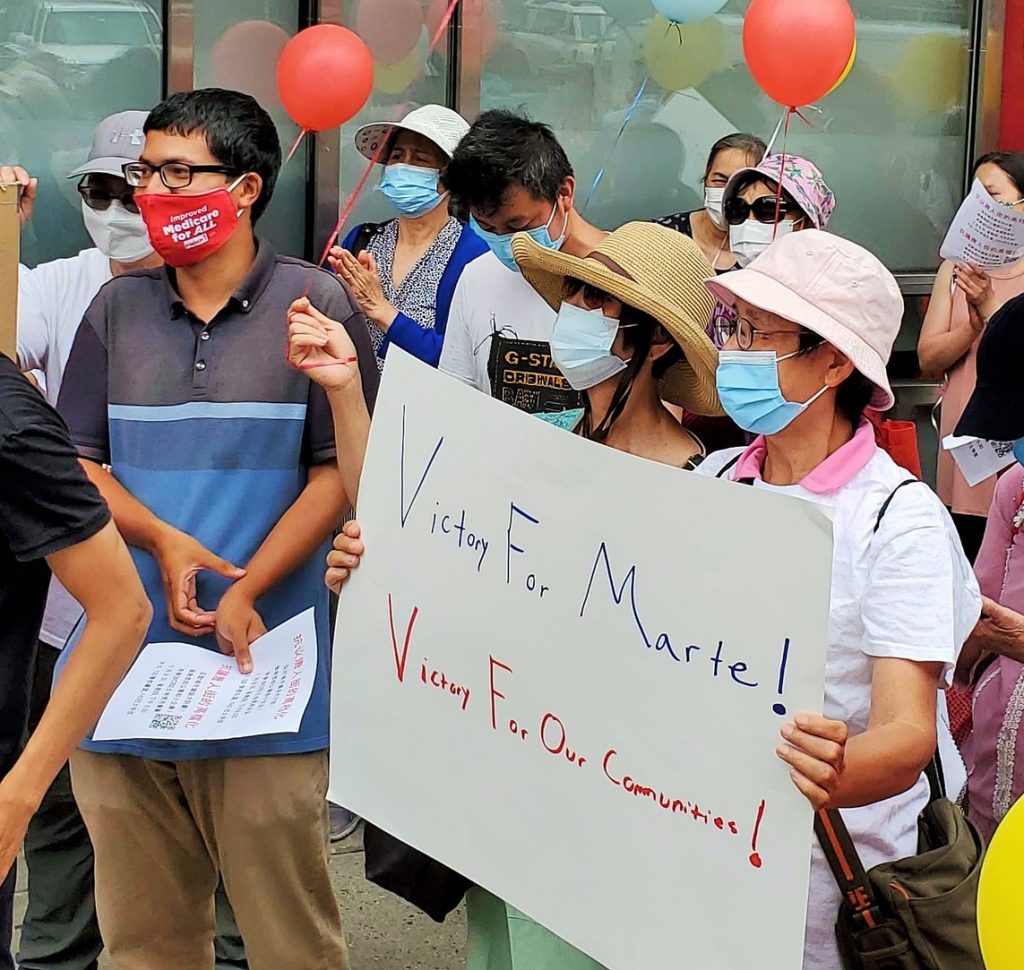
Also at the rally was Roger Manning, co-leader of M.A.G.I.C. (Metro Area Governors Island Coalition).
“Chris Marte getting elected is a very good thing for the district and the city,” Manning said. “He’s experienced, understands the issues, and has not sold out to the few at the expense of the many. He has been very supportive of M.A.G.I.C. in our efforts to stop the current city administration from overdeveloping on Governors Island.”
Speaking afterward, asked what he could do in the City Council to change the city’s course on the Elizabeth Street Garden and the Soho/Noho rezoning, Marte said the garden’s future probably hinges on a community lawsuit that is currently in court.
As for Soho and Noho, he said, the community has done a good job exposing the upzoning plan’s flaws and slowing down the approval process. Now, he said, the key is to “delay” things the next few months as Mayor de Blasio’s time in office winds down.
Asked about the negative campaigning against him, Marte shrugged it off. For example, a P.R. representative volunteering for Low had urged The Village Sun to do a report on Marte’s voting record before he got into politics, and even supplied the newspaper with the voting records. However, the flack stressed, The Village Sun should not say the information had come from a Low associate. “Say you did the research,” the rep repeatedly said. Marte admits that he did not vote in his mid-20s, like many young people who are not engaged in politics.
In a more vicious attack, an effort was made to link Marte to a flier by Youth Against Sweatshops that featured a caricature of Low with fangs, criticizing her over the 24-hour healthcare issue. Three Democratic politicians, Council Speaker Corey Johnson, Congressmember Nydia Velazquez and state Senator John Liu, even issued a tweet about the flier very late in the race, accusing Marte of running “an anti-Asian, racist smear campaign” against Low.
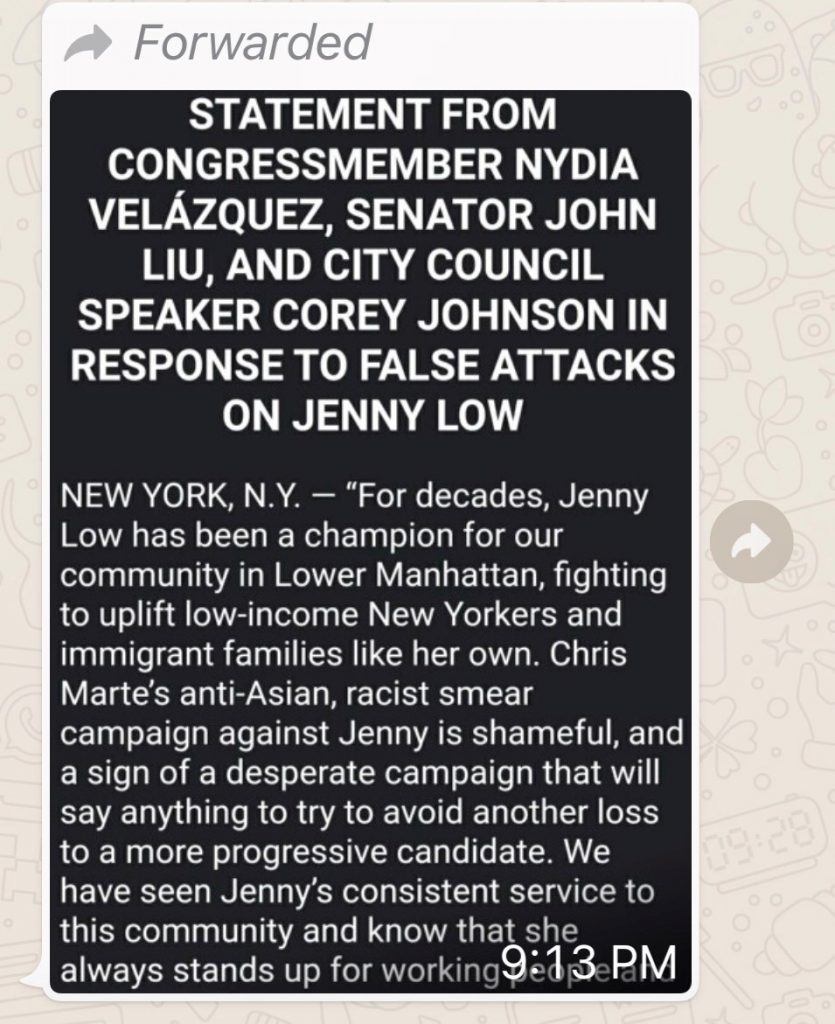
“It showed desperation, right?” Marte reiterated, unfazed. “They are trying to use any tactics. They knew we were going to win. They had the most expensive political consultants. They had the political machine.”
What mattered, though, was the outcome. On his phone, he pulled up the map of the election results: There was a small patch of green where Confucius Plaza is. All the rest of Council District 1 — from the East River to the Hudson River, from the Battery to Washington Square Park — was solid yellow. They were all election districts that Marte had won.
Four years ago, after losing to Chin, Marte went on to win election as a Democratic state committee member, which, like district leader, is another low-level party position. He offered that the difference in this primary election was simple: Low used her position as a district leader to cultivate her connections with other politicians; meanwhile, he used his role as a state committee member to fight for the community, out in the trenches.
Speaking a few weeks ago, Sweeney dubbed this election a classic David-vs.-Goliath contest.
“Jenny Low has all the elected officials and unions,” Sweeney said then. “Chris, I think, has one union. But he has the grassroots endorsements. This will be a race that they’ll be studying in political science classes.”
One thing a class like that might teach is the importance of sticking to it and hard work. As another local politico observed, although Marte lost to Chin four years ago, “he never stopped running for office. He just kept on running.”

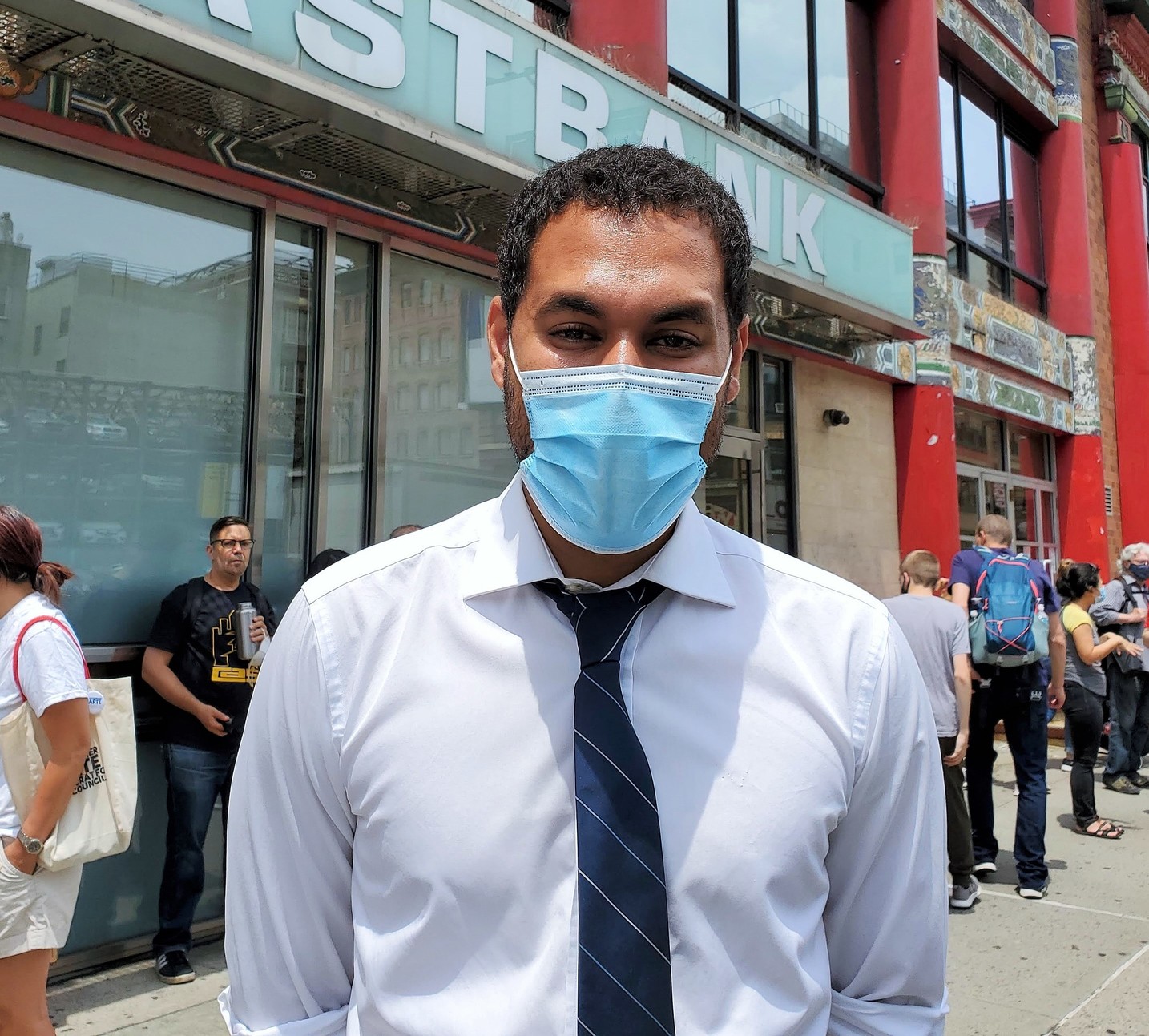
Good riddance to Margaret Chin! Christopher Marte is truly a politician for the people. If only we could clone him (for District 2).
July 4th 2021-Independence Day. Congratulations to the D-1 community.
Downtown New York has a true advocate.
Marte moved a mountain.
Fascinating article, but I’d sure like to know more about Chris Marte, and what he does or did for a living before seeking Margaret Chin’s seat on the NYC Council.